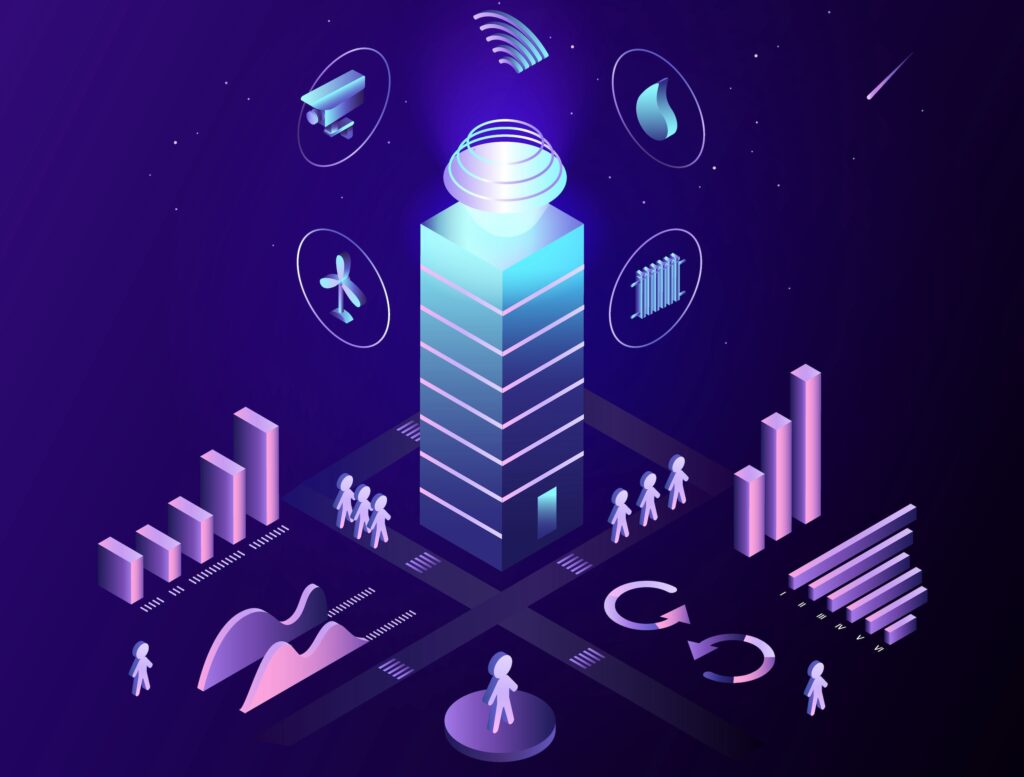Modern technology is increasingly blurring the lines between physical and digital worlds. This shift is most noticeable in the emergence of cyber-physical systems that can interact with both real world and digital realms.
In smart buildings, this transformation is represented by the convergence of Information Technology (IT), Operational Technology (OT), and cybersecurity. This triad is revolutionizing access control systems, making them more robust and adaptable.
“The industry is moving away from isolated, siloed systems towards integrated platforms that offer seamless, cost-effective solutions. Integrated systems transform data into actionable insights, allowing organizations to be predictive rather than reactive in their security management,” explains our new access control research report.
“A series of new innovations & enabling technologies have emerged to facilitate improved integrated access control with wider building or enterprise systems.”
Platform approaches such as unified security, physical identity and access management (PIAM), and physical security information management (PSIM) function as a central nervous system, collecting data from various endpoints and making it actionable. In an era where siloed solutions are rapidly being phased out, the ability of these unified platforms to integrate multiple facets of security into a single, user-friendly interface is valuable.
Platforms such as Genetec's Security Center offer this kind of unified solution that encompasses video surveillance, access control, and license plate recognition. This allows for an integrated approach to security, rather than compartmentalized functionalities that can’t interact with each other.
The end result is a more holistic and responsive security framework that can adapt to different challenges. The tide is moving towards these kinds of unified platforms that facilitate integrated monitoring and control of security systems but also building systems.
The platforms are designed to bring disparate building systems into a single user-friendly interface to streamline operations and allow for real-time adjustments based on comprehensive, cross-system data. If an integrated access control system detects an unauthorized entry, for example, a unified platform could automatically adjust lighting levels, lock down specific zones, and send notifications to security personnel, all from a centralized control point.
“Much of the growth in access control is likely to come from integration of access control and video into a unified security solution both for on-prem and cloud-based deployments,” Sanjeev Singh, VP of security products at Johnson Controls said.
“The industry is trending more and more towards unified and multi-domain security solutions. And these unified solutions will be enriched with mobile credentials, biometric and AI technologies to provide market differentiated solutions.”

APIs and SDKs for Integrated Access Control
These tailored integrations are made possible by application programming interfaces (APIs) and software development kits (SDKs). These tools decouple the software layer from the hardware, enabling third-party developers to create custom solutions that can be integrated into the existing ecosystem.
Honeywell's Pro-Watch suite, for example, provides an open architecture that allows for the integration of multiple brands and technologies, meaning that a video surveillance system could trigger an access control or HVAC sequence.
“The rise of APIs and SDKs has significantly democratized the security landscape. It encourages innovation by lowering entry barriers for smaller players who can now offer specialized solutions without the need to develop entire ecosystems. This is not just a win for the industry but also for the end-users who now have a wider range of tailored solutions to choose from,” our new security market study suggests.
“The interoperability offered by integrated systems unlocks new and creative use cases that were previously not feasible. An integrated access control system generates critical data to understand building use, offering the opportunity to reduce building operating costs, increase the asset’s value or improve the experience of building users,” our comprehensive report continues.
The Growing Integrated Access Control Market
The market for unified security solutions is driven by the increasing complexity of security needs, especially for large enterprises and critical infrastructure facilities. The push towards digitization and the Internet of Things (IoT) has further intensified the need for robust, multi-layered security systems that can be centrally managed.
The demand for real-time analytics, automated provisioning, and compliance necessitates a move towards more integrated, feature-rich, scalable solutions.
Our new study explores all the leading firms in the unified security solutions space, including Genetec, with its Security Center platform, and Bosch’s Building Integration System. Other notable players include Avigilon (Motorola), S2 Security (Carrier), and Kastle Systems, who all offer cloud-based, mobile-focused, unified security solutions that will likely appeal to modern businesses looking for scalable, remotely managed security systems.
“Integrated access control is evolving through convergence with progressive technologies. While obstacles exist, the benefits appear compelling, pointing toward gradual but increasing adoption across enterprises,” our Physical Access Control Business 2023 to 2028 report states. “The future landscape will likely involve a hybrid model blending physical and digital systems. Those able to provide holistic solutions with strong open platform support and flexible integration will be best positioned to capitalize on these industry shifts.”



